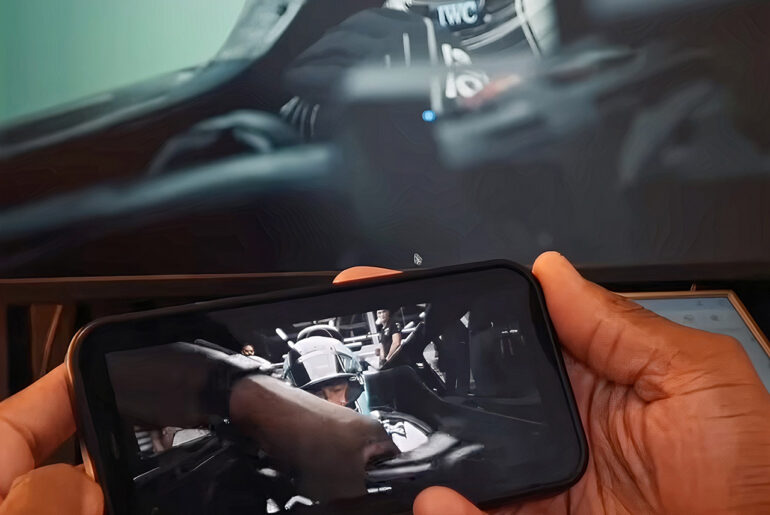
Formula 1 thrives on sensory overload—screaming engines, screeching tires, and the visceral jolt of speed. Apple’s latest move brings that intensity to your iPhone with the world’s first haptic-enabled movie trailer for F1, the upcoming Brad Pitt-led racing epic.
Apple’s Taptic Engine, the compact motor behind iPhone haptics, can take movies to the next level. For the F1 trailer, Apple pushed this tech to new heights, choreographing vibrations to mirror the film’s high-octane moments. When Brad Pitt’s character, Sonny Hayes, revs his engine, your phone rumbles with a deep, throaty buzz. Even things like a seatbelt clicking, can be felt. “We wanted to create an immersive experience that lets users feel the intensity of Formula 1. The Taptic Engine allows us to translate the energy of the film into tactile sensations with incredible precision,” an Apple spokesperson said.
- F1 CAR MODEL KIT – Take pole position with this LEGO Technic Ferrari SF-24 F1 Car model kit for adults, which is packed with features to delight F1...
- REALISTIC F1 CAR MODEL – Recreate the excitement of the F1 season as you explore the car’s realistic functions, including suspension, steering and...
- DETAILED ENGINE AND GEARBOX – Remove the engine cover to explore the LEGO Technic car’s 2-speed gearbox and the V6 engine with its spinning MGU-H
Creating this trailer required Apple engineers to work closely with the F1 production team, led by Top Gun: Maverick director Joseph Kosinski, to map out key moments in the two-minute clip. Each scene was analyzed for its sensory potential, with vibrations coded to match audio cues and visual beats. The process resembles how sound designers layer effects, but instead of speakers, the output is your phone’s haptic motor. Running on iPhones with iOS 18.4 or later, the trailer leverages the Apple TV app to deliver this synchronized experience. “It’s about enhancing the storytelling,” the Apple spokesperson noted. “Every vibration is intentional, designed to pull you deeper into the world of the film.”
Unlike the crude vibrations of early mobile games, the Taptic Engine uses linear resonant actuators to produce a spectrum of sensations, from gentle pulses to aggressive jolts. Apple’s software stack, including Core Haptics, lets developers fine-tune these effects with millisecond accuracy. For F1, the trailer’s haptic patterns were likely crafted using tools like Audio-to-Haptics, which converts sound waves into tactile feedback.
Why go to such lengths for a trailer? Apple’s playing a long game. With a reported $300 million budget, F1 is one of the company’s most ambitious theatrical releases, set to hit theaters June 27 before streaming on Apple TV+. The haptic trailer is a marketing masterstroke, exclusive to iPhone users, that showcases Apple’s ecosystem synergy. It’s also a proof of concept for future interactive media. Could full-length films get the haptic treatment? Could Apple TV+ eventually integrate tactile feedback into its app, turning your iPhone into a companion device? “We’re always exploring ways to deepen the connection between our devices and our content,” the spokesperson hinted.










